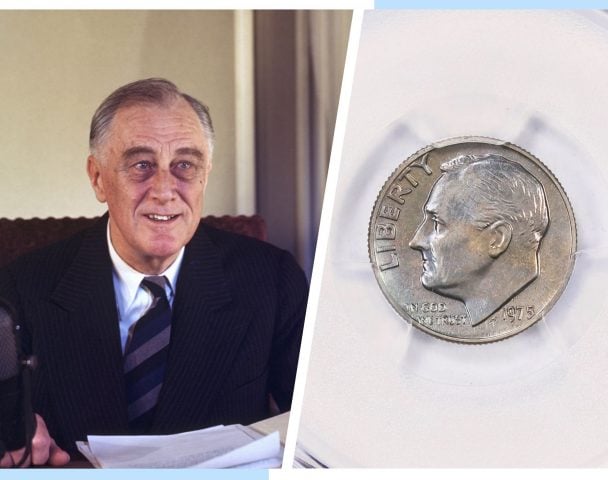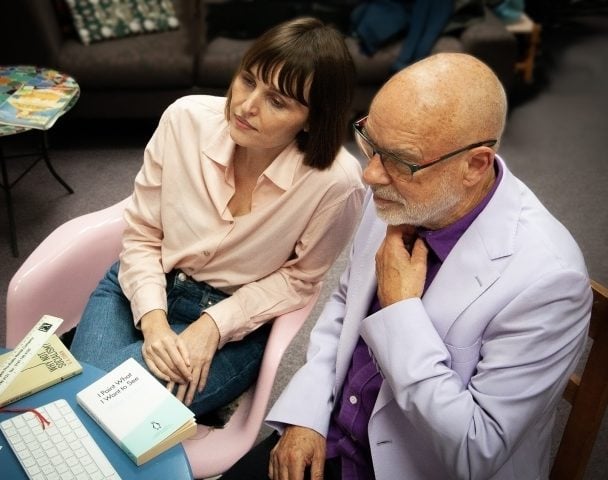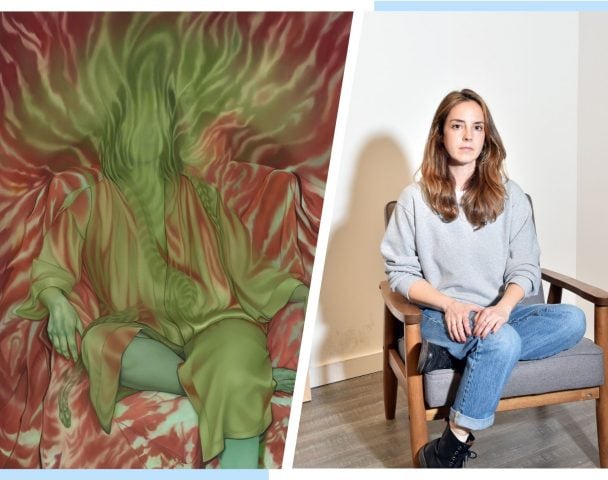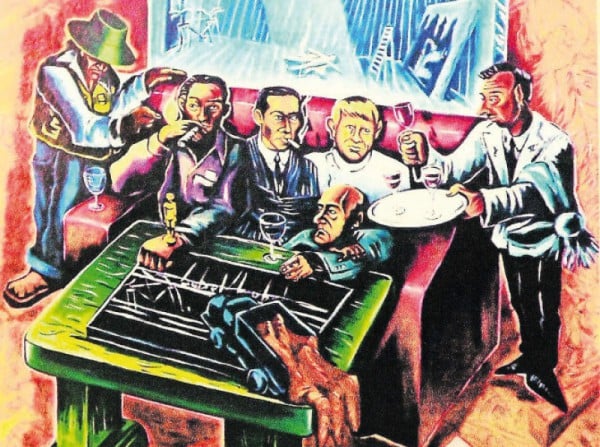

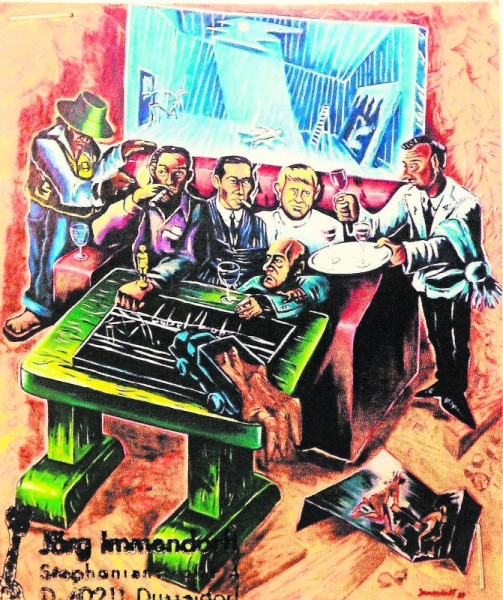
Copy of Jörg Immendorff, Ready-made de L’histoire dans Café de Flore (1987)
Photo: A3512/Roland Weihrauch via Remscheider General-Anzeiger
A Düsseldorf high court ordered on Tuesday that a painting purportedly by German painter Jörg Immendorff, Ready-made de l’Histoire dans Café de Flore, must not be destroyed, according to a dpa report.
The decision follows a several-years-long legal battle over the work, which Immendorff’s widow and former student, Oda Jaune, said is a copy of his work of the same title from 1987 and which hangs in a museum in Auckland, New Zealand. Immendorff died in 2007 at the age of 61 following a long bout with Lou Gehring’s disease. Jaune wanted the painting destroyed.
According to the report, the judge in the case, Wilhelm Berneke, noted that the copy in question has no importance as an artwork and pales in comparison to the original work. Investigations during the course of the court proceedings also determined that the signature on the painting was generated through some mechanical means rather than by the artist’s hand.
However, the question as to whether the copy was created with Immendorff’s permission remained unable to be answered. All that could be determined for certain was that an unnamed individual purchased the painting from one of Immendorff’s assistants in 1999 for 30,000 Marks (approximately €15,000 or $20,000 at the time) while in the studio. According to the judge, that fact suggests Immendorff was, more likely than not, aware of the work. And thus, real or fake, the painting can’t be destroyed.
The dpa notes that many copies came out of Immendorff’s studio during the 1990s. The fact and the appearance of faked paintings is said to have complicated the artist’s market position despite his critically acclaimed stature.
The copies began circulating in the 1990s as Immendorff began more engaging more heavily in a hard-partying lifestyle. That lifestyle came to a peak in 2003 what the Telegraph later called “the Orgy of the Year,” during which, “Immendorff was discovered naked having his nipples licked by a retinue of seven young filles de joie, while 11 grams of cocaine lay ready for consumption on a Versace ashtray nearby.”


